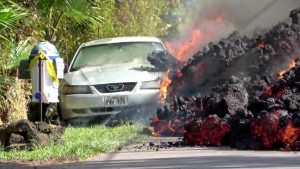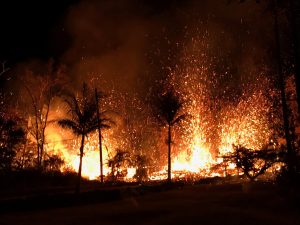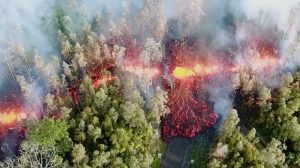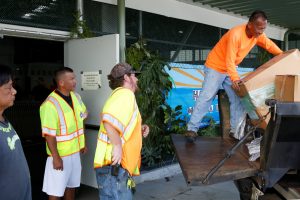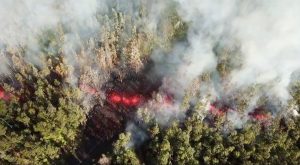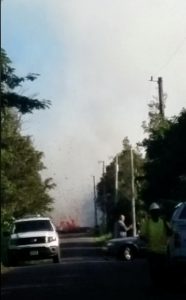
By Terray Sylvester
PAHOA, Hawaii (Reuters) – Emergency crews ordered Hawaii residents to leave their homes after two new fissures opened up near the Kilauea volcano, almost a week after it started a series of huge explosions.
People in the Lanipuna Gardens neighborhood in the southeast corner of Big Island were told there was an “immediate danger”.
“The residents … are going through a very difficult time. We ask for your understanding. We ask for your help,” the Hawaii Civil Defense Agency said in an alert.
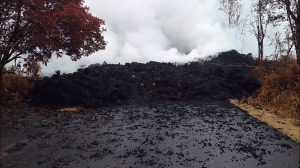
Deposits are seen on a road in Puna, Hawaii, U.S. in this still image from video taken on May 8, 2018. Apau Hawaii Tours/Social Media via REUTERS
Kilauea started spewing fountains of lava as high as 300 feet (90 meters) into the air on Thursday. Walls of molten rock destroyed houses in the southeastern corner of the island as deadly volcanic gases rose through cracks in the earth.
Around 1,700 people have already been ordered to leave their properties. No deaths or major injuries have been reported. But two new fissures – the 13th and 14th – formed on Tuesday and started releasing toxic gases, the agency said.
A total of 36 structures have been torched by the lava, which can reach temperatures of 2,000 degrees Fahrenheit (1,093 degrees Celsius).
Lava has been bubbling out of about 2-1/2 miles (4 km) of fissures that officials have warned are slowly spreading eastwards.
On Friday, the southeastern corner of the island was rocked by a powerful magnitude 6.9 earthquake on the volcano’s south flank, the strongest since 1975, and more quakes and eruptions have been forecast, perhaps for months to come.
Kilauea has been in a state of nearly constant eruption since 1983.
(Reporting by Terray Sylvester in Hawaii; Editing by Andrew Heavens)

